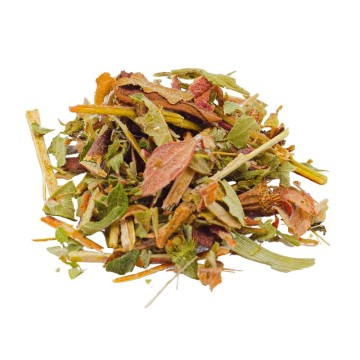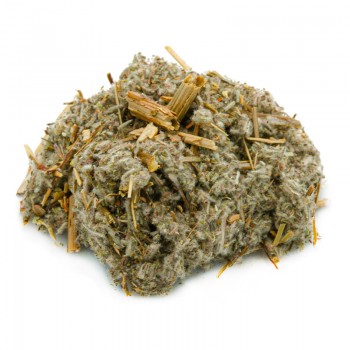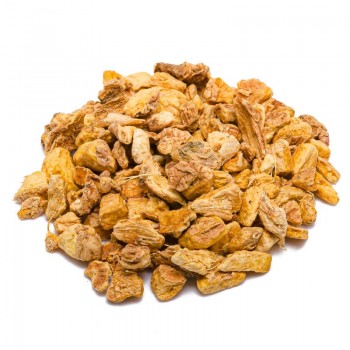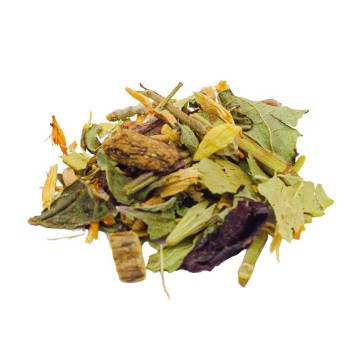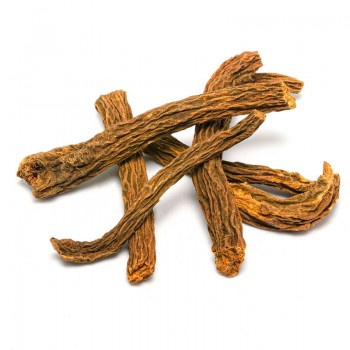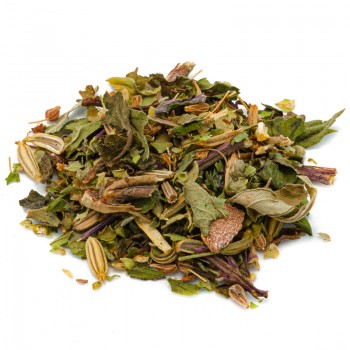Starting the day with an infusion of ginger and fennel, immediately helps the body to replenish fluids, and at the same time to counteract water retention.
This recipe that can be defined as "teatox" is perfect to drink especially after a large meal, because it helps to counteract indigestion and prevent digestive disorders .
Ginger and fennel infusion: properties and benefits
If constipation and bloating due to the formation of gas are worrying, this tea is the natural remedy par excellence.
The fennel and ginger herbal tea helps with a purifying effect , which mainly improves the condition of those who feel heavy. A sedentary lifestyle with an incorrect diet can give rise to problems such as constipation or poor digestion.
An infusion in which fennel seeds act not only as refreshing for the mouth can be useful for this, but are also appreciated for calming movements intestinal and stimulate the correct assimilation of food. Fennel decreases post-meal swelling and relieves the feeling of heaviness.
abdominal bloating can be caused by various factors such as poor diet, stress, food intolerances or specific diseases. In addition to the digestive factor, it can occur in women during the menstrual cycle.
The swelling of the abdomen is caused by the non-expelled stagnation of liquids in the body, due to water retention, which are combined with the excessive accumulation of intestinal gas. This drink helps reduce swelling thanks to the properties of its ingredients.
In addition to being rich in various nutrients, fennel has antioxidants that aid in food processing and work effectively to cleanse the intestines.
The detox action also helps purify the blood, stimulating diuresis and promoting the elimination of toxins through the diuretic action.
Ginger, with its high natural anti-inflammatory properties, is great for joining fennel and counteracting bloating, intestinal gas, acidity and other stomach problems.
Ginger is made up of a rhizome (root) very rich in properties: it contains proteins, amino acids, various mineral salts and vitamins. Its benefits are many, even though it has traditionally been used as a digestive and a bitter-tonic, to avoid heaviness after meals. Taken after meals, this herbal tea helps the digestive system, the action of ginger being very useful to soothe the symptoms of gastritis and intestinal ulcers. It relieves stomach and esophagus irritations, and its most studied benefit is its anti-nausea property.
Ginger is good for the digestive system but is also useful as a natural anti-inflammatory, against joint and muscle pain. Among the many properties, one of the most appreciated, especially by women, is to help the diet. The intake of ginger can have an impact on appetite, satiating, and thus promoting proper nutrition.
This infusion also benefits from many other beneficial components, such as chamomile for digestion and intestinal spasms, nettle and strawberry leaves with a diuretic effect (as well as rich of antioxidants).
In addition, the infusion contains cloves and orange , with digestive and toning properties.
An optimal blend, among digestive teas, which also gives a note of well-being thanks to the purifying capacity.
Origins and History of cultivation
Fennel comes from the perennial plant Foeniculum vulgare, native to the Mediterranean coasts. Its name derives from the fact that the leaves resemble hay (foeniculum).
It grew spontaneously especially near the coast of the sea and on the banks of rivers.
Today it is found in many parts of the world, since it represents a very adaptable plant, capable of withstanding even different climates.
In the past, fennel was used in traditional medicine, already in Roman times, and over time it has become popular as a herbal remedy.
It was considered beneficial for its purifying properties anddiuretic, stimulant for the intestine and to promote proper digestion. In the Mediterranean areas it was famous for its ability to change the taste of wine and make it look better.
If in ancient times wild fennel (fennel) was used, its cultivation began in the Renaissance. Ginger (Zingiber officinale) is a flowering plant whose rhizome, the underground root, is used in cooking. From this we get ginger used as a spice and in herbal medicine.
Ginger is thought to originate from the southern part of ancient China.
It soon spread to India, the rest of Asia and West Africa. It was considered a cure-all in Chinese medicine, especially for digestion.
Europe became acquainted with ginger around the 1st century, when the ancient Romans traded with India, and already considered it valuable.
When Rome began to decline its power, Europe forgot about ginger until Marco Polo brought it back from his trip to the East.
In the Middle Ages, it was so valuable that the price of half a kilo of ginger was the same as that of a sheep. In the 15th century, with the discovery of the New World, it was brought to the Caribbean where it began to grow easily.
Today, the largest ginger producer in the world is India.
Plant and flowers
Fennel (Foeniculum vulgare) is a flowering plant of the Apiaceae family (Umbrelliferae).
We distinguish the variety of wild fennel from the sweet fennel of horticultural cultivation.
All parts of the plant are fragrant, and the cultivated variety can grow up to 80 centimeters. It has yellow flowers, followed by green and then greyish fruits, improperly defined as seeds.
Ginger (Zingiber officinale) is a perennial herb that grows for about one meter. The flowers have pale yellow petals, and arise directly from the rhizome on buds.
Tropical ginger plants prefer high humidity and high temperatures. The soil needs to be moist and rich, and when they get too dry, they will stop flowering and may even go dormant.
Chamomile comes from the flowers of Matricaria chamomilla, part of the Asteraceae, the botanical family of daisies. Its calming properties are famous, due to the top of the plant.
Linden is a plant of the genus Tilia - family of Tiliaceae cultivated mainly for therapeutic purposes in the variety Tilia cordata Mill. It is a plant native to Europe and the Caucasus, which grows in hilly areas.
Nettle or Urtica dioica is a perennial flowering herbaceous plant of the Urticaceae family. Native to Europe, temperate Asia and western North Africa, it is now widespread all over the world. The species is divided into six subspecies, with prickly hairs on the leaves and stems.
The strawberry comes from Fragaria, a plant of the rose family - Rosaceae. The shrub produces succulent, red fruit, and tiny white flowers. There are many species of strawberries, and the most cultivated is Fragaria x Ananassa, also called Garden Strawberry.
Cloves are the dried flower buds of the pinata Eugenia caryophyllata (or Syzygium aromaticum) belonging to the Myrtaceae family and native to Indonesia. They are a well-known spice in cooking, and have nothing to do with the carnation plant.
Cinnamomum zeylanicum, also called Ceylon cinnamon, is a small evergreen tree belonging to the Lauraceae family. It is originally from Sri Lanka, and its inner bark is used to obtain the spice of cinnamon, which has been widely used since ancient times. The orange tree is the Citrus sinensis belonging to the Rutaceae family. The fruits are sweet oranges, distinct from bitter oranges. Many scholars think that orange is a plant - a hybrid of pomelo and mandarin, of Asian origin.
Nutritional values of the infusion of ginger and fennel
This herbal tea contains numerous antioxidants such as anethole, estragole, linalool, quercetin, phytonutrients, minerals, vitamins and volatile oils.
Among the phytoestrogens there are anethole and fencione, flavonoids and coumarins.
From ginger derive resin and gingerols (to which we owe the spicy qualities).
The vitamins most present in the infusion are vitamin C, vitamin E, and those of the B complex - pyridoxine, riboflavin, niacin and pyridoxine, which is vitamin B- 6.
Minerals include iron, calcium, copper, manganese, iron, potassium, magnesium, phosphorus and zinc.
How to use the ingredients in the ginger and fennel tea
The ideal infusion is reached by putting the mixture of fennel and ginger in a cup (250 ml), about 3-5 grams, with water at 100 ° C.
Leave to infuse for 10 to 12 minutes, before drinking the digestive herbal tea.
Add honey or sugar if desired.
Ginger and fennel infusion: side effects and contraindications
Among the digestive teas, this blend has no major contraindications.
In any case, it is not recommended for subjects sensitive to the components of the infusion, who may have allergies or intolerances to fennel, ginger, chamomile, lime, nettle, strawberry leaves, cloves, orange. It is recommended to take fennel and ginger herbal tea in the recommended doses, and not for too long periods - in order to avoid episodes of diarrhea or stomach irritation.
Ask your doctor whether to take the infusion during pregnancy or breastfeeding.

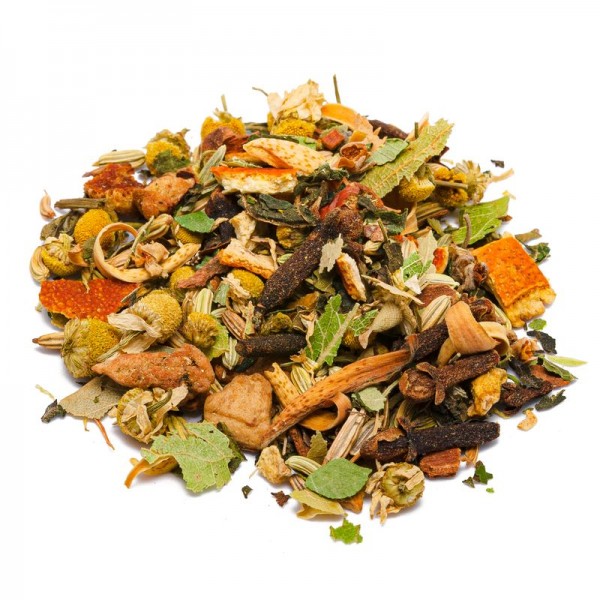









 No reward points for this product.
No reward points for this product.
